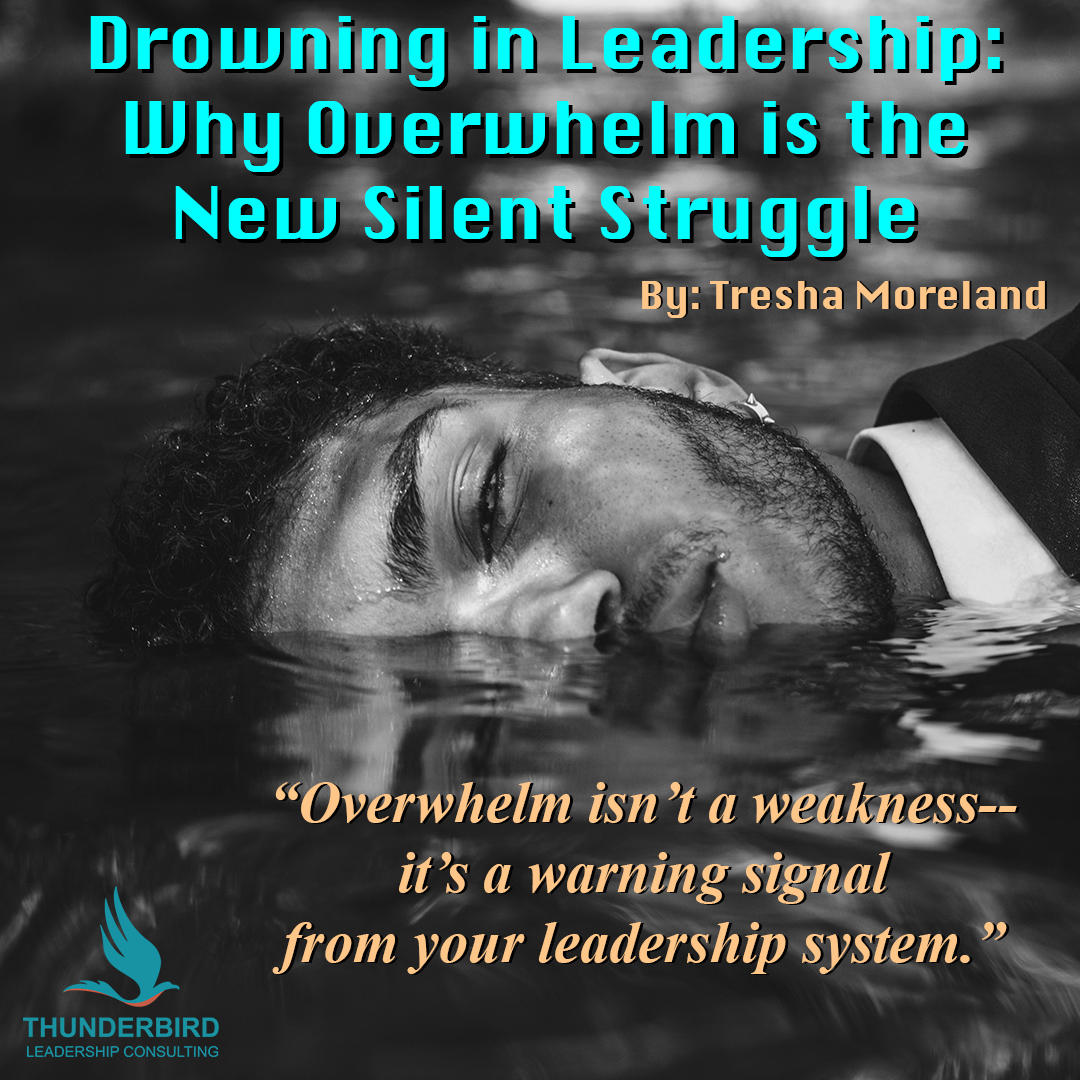Drowning in Leadership: Why Overwhelm is the New Silent Struggle
By Tresha Moreland, MSHRM/MBA
The Quiet Crisis Few Leaders Talk About
There’s a new crisis creeping through the upper tiers of leadership. It’s not a strategy gap or a skills shortage—it’s overwhelm.
And it’s hitting some of the most high-functioning leaders I coach.
These executives aren’t struggling because they lack capability. They’re struggling because they’ve been expected to operate at high-stakes, crisis-level performance—for far too long, with no pause and no recalibration.
“I’m Just Overwhelmed”
In most coaching sessions I’ve had, this phrase comes up. It’s whispered with embarrassment or casually tacked onto the end of a sentence—as if being overwhelmed is something to apologize for rather than address.
What I want leaders to know is: overwhelm is not a weakness. It’s a warning signal.
Why Overwhelm Hits Executives Hard
Overwhelm at the leadership level isn’t about disorganization or poor time management. It’s the result of complex, unrelenting demands such as:
- Decision fatigue from nonstop pivots
- Competing internal and external priorities
- Responsibility for culture and morale during uncertainty
- High-stakes visibility without recovery time
- Leading others through burnout—while experiencing it yourself
Most executives don’t have time to recognize their burnout until it affects outcomes. And by then, it’s often too late for a quick fix.
Signs You’ve Hit the Tipping Point
The tipping point doesn’t look like collapse. It looks like:
- A foggy brain during high-level meetings
- Avoiding decisions or delaying them indefinitely
- Checking out emotionally while still “functioning”
- Low energy that no amount of sleep seems to fix
- Cynicism or frustration in place of curiosity
This isn’t a leadership flaw. It’s a call for a new model of leadership—one that balances clarity with capacity.
Coaching Through Overwhelm
Here’s what we focus on when coaching leaders through overwhelm—and toward sustainable, high-impact leadership:
1. Apply the 3D Method: Decide, Delegate, Delete
Overwhelmed leaders often try to do it all. Instead, we focus on ruthless prioritization:
- Decide what only you can do
- Delegate what others can do at least 80% as well
- Delete what no longer serves your core goals
This triage tool alone can restore executive clarity.
2. Build Micro-Recovery Into Your Week
Recovery isn’t a two-week vacation. It’s small, intentional moments:
- 10 minutes of stillness between meetings
- Walks without devices
- Creative space with no agenda
These reset your executive brain and reduce reactive decision-making.
3. Lead with Clarity, Not Just Charisma
Clear priorities, stated expectations, and firm boundaries don’t just help your team—they help you. Ambiguity is a mental drain. Replacing it with alignment builds confidence in your decisions and trust in your leadership.
4. Normalize the Conversation
When leaders model vulnerability and clarity, it changes the game. Sharing “I’ve been overwhelmed too” opens the door for more honest discussions across the organization.
Leadership doesn’t need to mean isolation.
5. Shift From Hustle to Wholeness
High-performing leaders often equate success with more. More output, more hours, more meetings. But sustainable success comes from doing less, better.
It means focusing energy on strategic efforts that generate momentum—not just motion.
A New Way Forward
If you’re overwhelmed, you’re not alone—and you’re not broken.
What you’re feeling is a signal that your current leadership model may be outdated for today’s pace. It’s a chance to evolve from reactive to responsive, from exhausted to intentional.
And you don’t have to do it alone.
Final Takeaway
As a coach, I’ve seen what’s possible when leaders prioritize clarity over chaos. The results? Renewed focus. Strategic momentum. And leaders who actually enjoy leading again.
Let’s stop glorifying burnout and start designing leadership that lasts.
If this article resonates with what you or your leaders are facing, reach out to us to explore how focused coaching can transform overwhelm into clarity and sustained performance.




